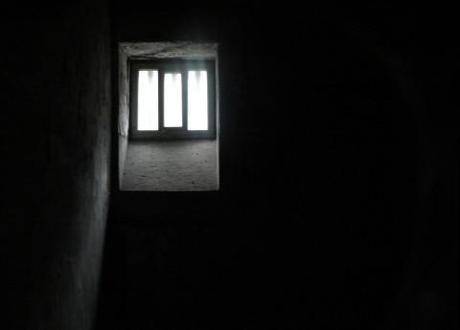
Prison: Solitary confinement is maddening. Photo credit: Aapo Haapenen, http://www.flickr.com/photos/decade_null
“Some words are uncomfortable to write,” Susan Greene acknowledges in “The Gray Box,” a multimedia project on solitary confinement just published in Dart Society Reports.
“Trauma is one of them, especially when used about people who have traumatized others. Torture is another. In the moral balance between crime and punishment, the word risks discounting the suffering convicts have brought their own victims.
“Nothing is black and white in a gray box. Lines can blur between the good guys and the bad ones. It’s far easier to label the secret police in some foreign dictatorship as torturers than to lob the word at prison guards in the next county.”
Is it torture to keep a prisoner in an isolation cell for years or even decades at a time? Is it trauma to endure such large spans of one’s life with no meaningful human contact? These are the questions posed in Greene’s article and accompanying video documentary.
Considering how much we as a nation have debated the morality of capital punishment, we’ve hardly discussed what happens to the 99.9 percent of major-crime convicts who aren’t sentenced to death. The use of solitary confinement on an estimated 80,000 people in federal penitentiaries, state prisons and local jails has gone unexamined far too long.
Greene looks at the genesis of penal isolation as a morally progressive social experiment in the 19th century by Quakers hoping that long periods of solitude would help prisoners repent. Most prisons suspended the practice by the late 1800s once it became clear confinement was having the opposite effect. “It devours the victims incessantly and unmercifully,” Alexis de Tocqueville reported from a prison in New York. “It does not reform, it kills.”
“It does not reform, it kills.” Alexis de Tocqueville on solitary confinement.
Then, a century later, came a bloody day in 1983 when two corrections officers were killed in separate incidents at the federal penitentiary in Marion, Ill. Those killings marked a tipping point, prompting efforts by Reagan-era law-and-order types to build dozens of federal and state supermaxes – prisons designed for mass isolation – in the name of officer safety.
Greene’s project looks at the effects of those decisions after decades of supermax-style isolation. Through letters with dozens of prisoners and interviews with men who’ve been released, she relays what it’s like spending long spans of time in a space the size of two queen-sized mattresses. We hear from the prisoners themselves about the numbing tedium of solitary. We learn about creative ways they devise to pass their time. We see the artwork they’ve created and the letters they’ve written. And we glean – maybe for the first time in a piece of journalism – how they lose themselves and their identities.
“The world outside is like another planet,” writes Jack Powers, a prisoner at the ADX federal supermax prison in Florence, Colo. “I feel like I am trapped within a disease.”
Hours before Greene’s project went live on Dart Society Reports, a stunning news story unfolded in federal court in New Mexico. A jury there awarded $22 million to Stephen Slevin, who was held for 21 months in solitary confinement in Dona Ana County on a DUI charge that ultimately was dropped. Like many prisoners in isolation, Slevin had lost touch of time and reality. Alarming photos of him before and after his confinement appear in Greene’s documentary.
“I had no grip on what was happening to me,” he told her. “I was like an animal caged in a zoo.”
The 8th Amendment of our Constitution ostensibly protects prisoners from torture. What constitutes “cruel and unusual punishment” pivots on “the evolving standards of decency that mark the progress of a maturing society.”
“The Gray Box” questions how much we’ve matured as a society since suspending the use of solitary confinement in the 19th century. The project reminds us that the time has come to contemplate our standards as they pertain to long-term isolation, and to shine as bright a light into prisons right here at home as we did, say, at Abu Ghraib.
Short-term solitary confinement may make sense for the most violent prisoners, and only for short periods. But isolating people for years and even decades shocks the conscience, especially as illustrated by the men who keep writing Greene and screaming for someone to hear them.
Deirdre Stoelzle Graves is the Executive Director of The Dart Society, whose mission is to connect and support journalists worldwide who advance the compassionate and ethical coverage of trauma, conflict and social injustice.
